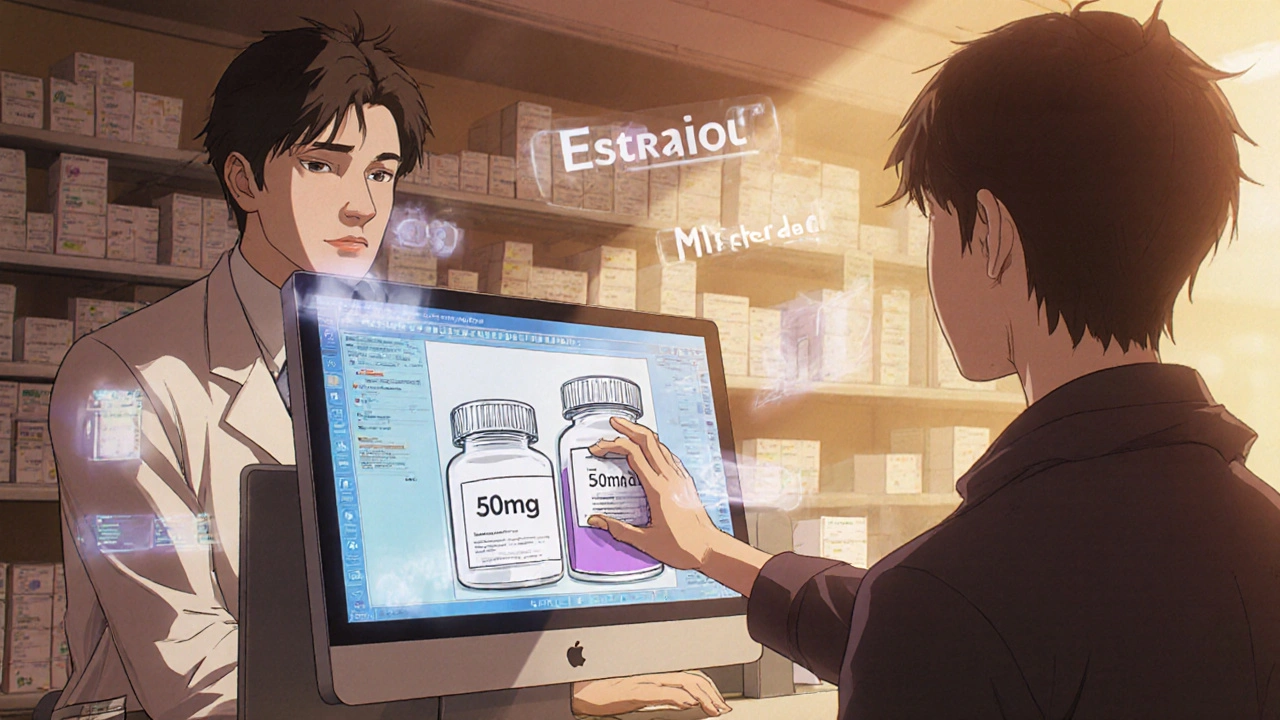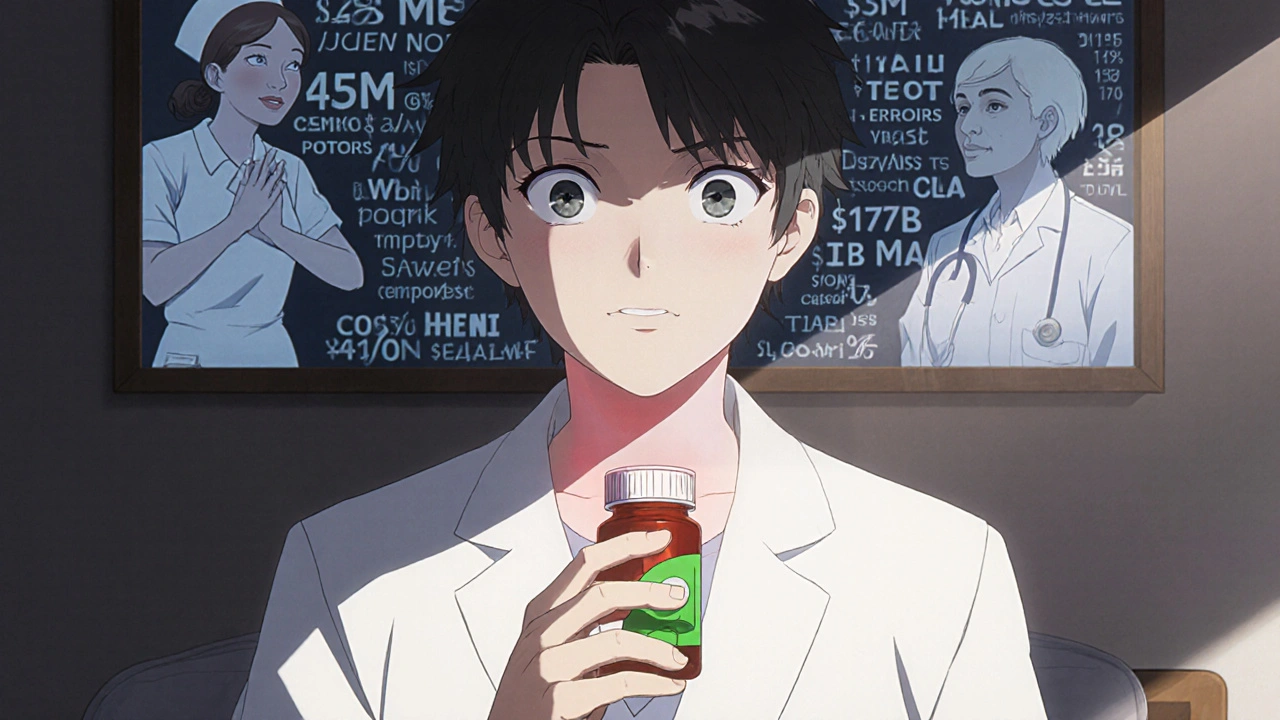Every year, millions of people in the U.S. receive the wrong medication, wrong dose, or wrong instructions - not because of malice, but because of simple, preventable mistakes. These aren’t rare glitches. They’re systemic problems, and they look completely different depending on whether you’re in a hospital or your local pharmacy.
How Often Do Medication Errors Happen?
In hospitals, errors are shockingly common. One major study found that nearly 1 in 5 doses given to patients contained some kind of mistake - whether it was the wrong drug, wrong time, or wrong amount. That’s not a typo. That’s 20% of all medications given in typical hospital units. Nurses, pharmacists, and doctors are juggling dozens of patients, shifting schedules, and complex drug regimens. Even with all the technology, mistakes slip through. Now, compare that to your neighborhood pharmacy. If you walk in to pick up a prescription, the chance of getting the wrong medication is about 1.5%. That sounds low - and it is - compared to hospitals. But here’s the catch: 1.5% of 3 billion prescriptions dispensed each year in the U.S. equals 45 million errors. That’s not a small number. That’s the equivalent of every person in Sydney, Melbourne, and Brisbane combined getting the wrong drug at least once.Where Do the Errors Happen?
In hospitals, errors happen at every step. A doctor prescribes the wrong dose. A pharmacist misreads the order. A nurse gives it at the wrong time. The system is full of checkpoints - but each one is also a chance for something to go wrong. The biggest problem? Administration errors. Nurses are rushed, tired, or distracted. A patient gets 10mg instead of 1mg. The mistake happens right before the medicine touches their body. In retail pharmacies, the errors usually happen earlier - during transcription. That’s when the pharmacist reads the doctor’s handwritten or electronic order and enters it into the system. A simple misread turns “1 tablet twice per week” into “1 tablet twice per day.” That’s what happened to a woman taking estradiol. She ended up with dangerously high hormone levels. No one caught it until she went back to her doctor with symptoms. The big difference? In a hospital, someone else - a nurse, a second pharmacist, a barcode scanner - might catch it before it hurts you. In a pharmacy, you’re the last line of defense. You’re handed the bottle and expected to know if the pill looks right, the label makes sense, and the dose matches what your doctor said. Most people don’t have the training to spot the difference between 5mg and 50mg. Or between a blood thinner and a painkiller.Why Do These Mistakes Keep Happening?
In hospitals, it’s chaos. Overworked staff. Too many patients. Poor communication between departments. One doctor writes “AM” for morning. Another reads it as “12.” A patient gets insulin at midnight instead of breakfast time. These aren’t stupid mistakes. They’re system failures. In pharmacies, it’s pressure. Pharmacists are expected to fill 250+ prescriptions a day. Each one needs to be checked, labeled, counseled. Add in automated dispensing machines that sometimes misfire, and you’ve got a recipe for error. Studies show that 80% of pharmacy mistakes come from cognitive overload - the brain gets tired, sees something similar, and picks the wrong option. It’s not laziness. It’s human nature under stress. Both places suffer from underreporting. Hospitals log errors because they’re required to. Pharmacies? Not so much. Until recently, most states didn’t even require pharmacists to report mistakes. That’s changing - California now demands error logs during inspections - but many places still treat errors as personal failures instead of system flaws.
What’s the Real Risk?
Hospitals have higher error rates, but they also have more safety nets. If you get the wrong drug, a nurse might notice the color doesn’t match. A pharmacist might catch the wrong dosage before it leaves the unit. Even if it reaches you, you’re being monitored. Vital signs are tracked. Lab work is done. Someone is watching. In retail pharmacies, you’re on your own. You take the pill at home. You feel dizzy. You get a rash. You call your doctor. By then, the damage might be done. The NIH found that 1 in 10,000 community pharmacy errors led to hospitalization. That’s rare - but when it happens, it’s often because the drug was something dangerous: warfarin, insulin, lithium. One mistake can send you to the ER - or worse. The cost? Hospitals spend at least $3.5 billion a year treating injuries from their own medication errors. But community pharmacy errors add billions more - not just in hospital visits, but in lost workdays, follow-up appointments, and long-term complications. The total price tag for all medication errors in the U.S.? Over $177 billion a year.What’s Being Done to Fix It?
Hospitals are using barcode scanners that match the patient’s wristband to the drug. That’s cut errors by up to 86%. Electronic health records now flag dangerous combinations - like mixing blood thinners with certain antibiotics. Some systems even alert staff if a dose is given too early or too late. Retail pharmacies are catching up. CVS Health rolled out AI-powered verification in 2022. It scans prescriptions, compares them to patient history, and flags odd dosages. Result? A 37% drop in dispensing errors. Mayo Clinic’s integrated system cut hospital errors by over half. These aren’t sci-fi tools - they’re practical, proven fixes. The biggest change? Culture. For years, pharmacists and nurses were punished for errors. That made people hide them. Now, the focus is on learning, not blaming. The National Coordinating Council for Medication Error Reporting says: “We need systems that don’t punish people for being human.” That’s the key. Mistakes will happen. But if we design systems that catch them before they hurt someone - that’s progress.
What Can You Do?
You don’t have to be a medical expert to protect yourself. Here’s what actually works:- Always ask: “Is this what my doctor prescribed?” Compare the pill to the label. Look up the drug name online if you’re unsure.
- Check the dose. If your doctor said “take one pill every other day,” but the label says “daily,” speak up.
- Ask the pharmacist: “What is this for?” and “What side effects should I watch for?”
- If you’re in the hospital, ask nurses to show you the drug before they give it. Don’t be shy - you have the right to know.
- Keep a list of all your medications - including doses and why you take them. Bring it to every appointment.

